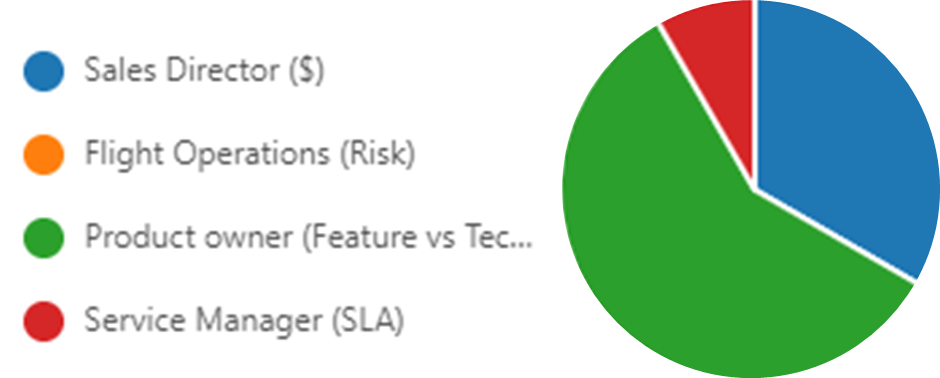Klubový (hybrid) večer itSMF Slovakia – Agilná transformácia ako základné východisko pre digitalizáciu a radikálne zjednodušovanie
25. 4. 2024 (17:30 - 19:30)
Publikováno: 7. 12. 2020
Written by: Paul Wilkinson
„The question about IT value is not new. The Value proposition of ITSM to become more strategic. To focus more on Value, rather than Service levels.“
‘An Elephant, an Astronaut and a gambler walk into a bar…..’
What has this go to do with ‘Digital Transformation and the co-creation of value’, the topic of the Seminar ‘ITSM Practice’ organized by itSMF Czech Republic? Read on to find out.
The question is: Are YOU the gambler in this story?
It was clear from the pre-conference survey and the panel discussion that digital disruption – accelerated by COVID – is forcing a transformation of ITSM capabilities and the adoption of more agile ways of working. It is also causing a shift in the Value proposition of ITSM to become more strategic. To focus more on Value, rather than Service levels.
First of all what has an Elephant got to do with anything?

Value? What is value? ….and says who?
The question about IT Value is not new.
It has been around for a LONG time, and it is a global question.
It suddenly seems to be a hot ‘buzzword bingo’ term as all of the latest Industry frameworks, such as ITIL4, keep talking about it. Value chains, Value steams, Value systems.
The word Value reminds me of the story of ‘The blind men and the Elephant’.
The blind men all touch a different part of the Elephant and then describe what they think an Elephant is……
Just like Value. It is a matter of perspective.
In the image above you see:
The moral of the story is that the Elephant should have thought of all this before it got itself involved with all these business & IT people.
As you can see there are lots of different views on what Value is, and if you don’t agree and align everybody to go on the same journey – with the agreed, inevitable twists and turns – then you may end up with a rather unpleasant smelling result and everybody saying it’s the Elephants fault.
I shifted the session from Elephants to Astronauts. The Astronaut representing our Marslander business simulation in which delegates play the Mission control team of the MarsLander space mission.
The Astronaut arrives in a ‘state-of-the-art-wearable-IT-full-of-sensors-space-suit’. (Only nobody bothered to tell him – or her – that they are no longer required, because MarsLander is an unmanned mission driven by Robotics and artificial intelligence, so he –or she – should go and reskill and learn be a data scientist or ITIL expert or something). The world is changing fast and not waiting for us to skill-up with new skills.
We ran through a scenario from the MarsLander simulation which is designed to bring end-to-end stakeholders together to ride the bucking Elephant….er…or rather in this case, steer the MarsLander rocket as it hurtles towards its destination. Digital transformation has shifted the emphasis from steering the slow moving, trudging Elephant to steering the Marslander that represents the ballistic speed of digital transformation, with small continual iterative tweaks in direction and everybody working as an end-to-end team.
I described the simulation setting. The mission is underway. The Application development role in the simulation has one free Work-In-Progress slot available, and is being given 3 new pieces of work to do:
We asked the audience (via a survey) ‘If you were App dev which one would you choose?’

Observation: You can see the different choices being made. This shows what can happen when priority mechanisms and Value is not clear.
People can make what they ‘assume’ to be the right choice.
In the situation above somebody will NOT be getting the VALUE that they were expecting and then App Dev will get the blame 🙂
Without the appropriate business context (‘why’?) and priority mechanism to enable effective decision making then App dev will need to escalate – causing delays to Value realization and not supporting the concept of ‘High velocity IT’ – which is what all this agile transformation is all about.
The next survey question was ‘Who should prioritize?’

Observation: It was clear that delegates assumed the Product owner would have authority (and insight) to balance these types of work. It was interesting that nobody considered Flight Operations director (Business As Usual manager responsible for managing risk) in determining the priority of the Problem (considering critical business timing and critical business functionality the problem represented a significant risk).
IT would appear that we need to look at Value from different perspectives, and ensure that we have an ‘informed decision making capability’.
What we often see in organizations is the following:
These end-to-end challenges clearly put Value at risk.
What are we, and what SHOULD we be doing about these challenges?
Part 2 of this article will explore this further showing the results of our global ABC (Attitude, Behavior, Culture) findings as well as survey findings conducted with itSMF, and asking the question ‘Are YOU gambling with YOUR IT’?
25. 4. 2024 (17:30 - 19:30)